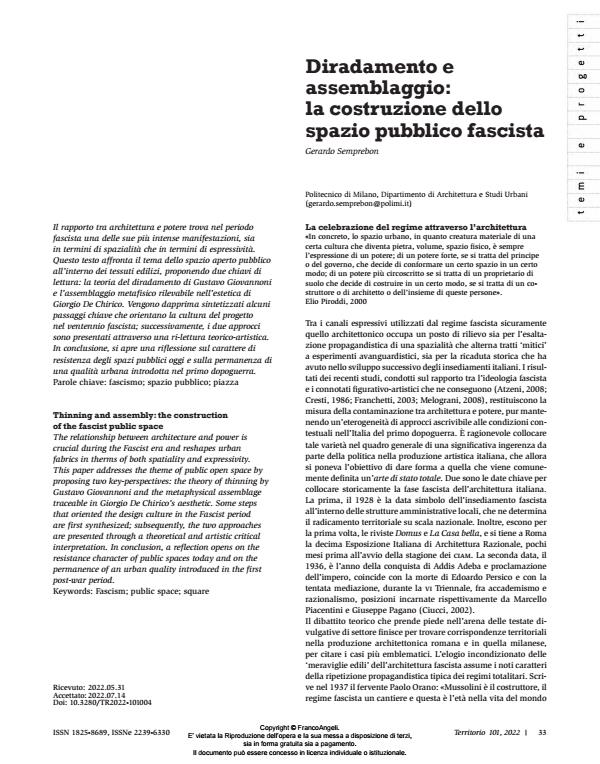Diradamento e assemblaggio: la costruzione dello spazio pubblico fascista
Titolo Rivista TERRITORIO
Autori/Curatori Gerardo Semprebon
Anno di pubblicazione 2023 Fascicolo 2022/101
Lingua Italiano Numero pagine 9 P. 33-41 Dimensione file 601 KB
DOI 10.3280/TR2022-101004
Il DOI è il codice a barre della proprietà intellettuale: per saperne di più
clicca qui
Qui sotto puoi vedere in anteprima la prima pagina di questo articolo.
Se questo articolo ti interessa, lo puoi acquistare (e scaricare in formato pdf) seguendo le facili indicazioni per acquistare il download credit. Acquista Download Credits per scaricare questo Articolo in formato PDF

FrancoAngeli è membro della Publishers International Linking Association, Inc (PILA)associazione indipendente e non profit per facilitare (attraverso i servizi tecnologici implementati da CrossRef.org) l’accesso degli studiosi ai contenuti digitali nelle pubblicazioni professionali e scientifiche
Il rapporto tra architettura e potere trova nel periodo fascista una delle sue più intense manifestazioni, sia in termini di spazialità che in termini di espressività. Questo testo affronta il tema dello spazio aperto pubblico all’interno dei tessuti edilizi, proponendo due chiavi di lettura: la teoria del diradamento di Gustavo Giovannoni e l’assemblaggio metafisico rilevabile nell’estetica di Giorgio De Chirico. Vengono dapprima sintetizzati alcuni passaggi chiave che orientano la cultura del progetto nel ventennio fascista; successivamente, i due approcci sono presentati attraverso una ri-lettura teorico-artistica. In conclusione, si apre una riflessione sul carattere di resistenza degli spazi pubblici oggi e sulla permanenza di una qualità urbana introdotta nel primo dopoguerra.
Parole chiave:fascismo; spazio pubblico; piazza
- Fragile Heritage in Chinese Ruralities Gerardo Semprebon, pp.25 (ISBN:978-3-031-77516-1)
Gerardo Semprebon, Diradamento e assemblaggio: la costruzione dello spazio pubblico fascista in "TERRITORIO" 101/2022, pp 33-41, DOI: 10.3280/TR2022-101004